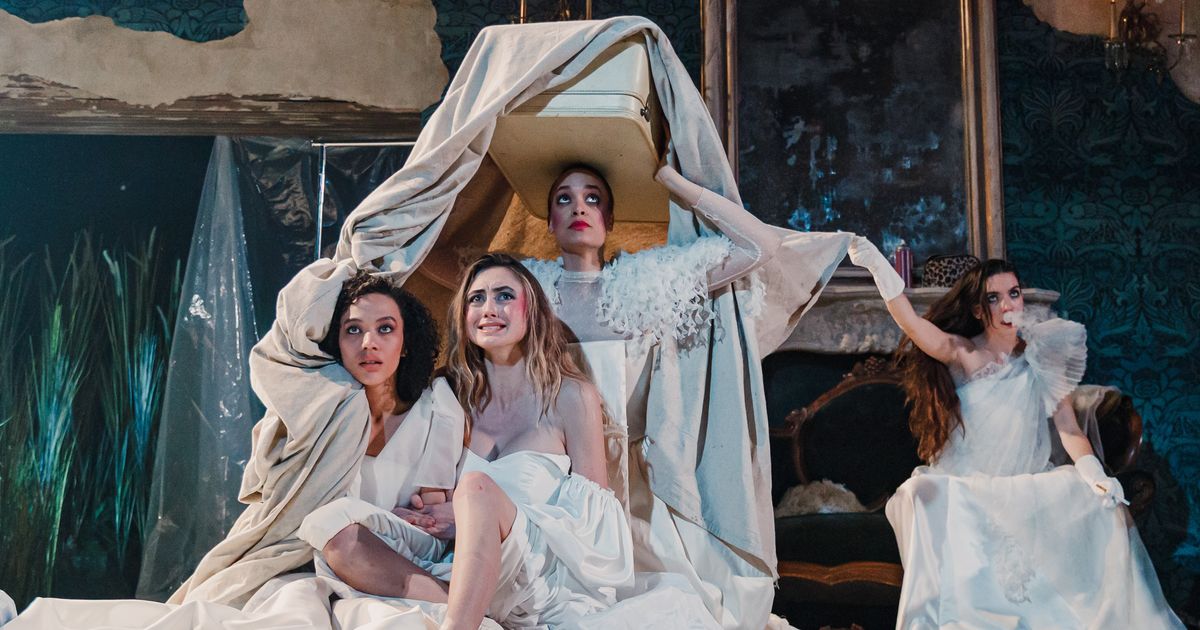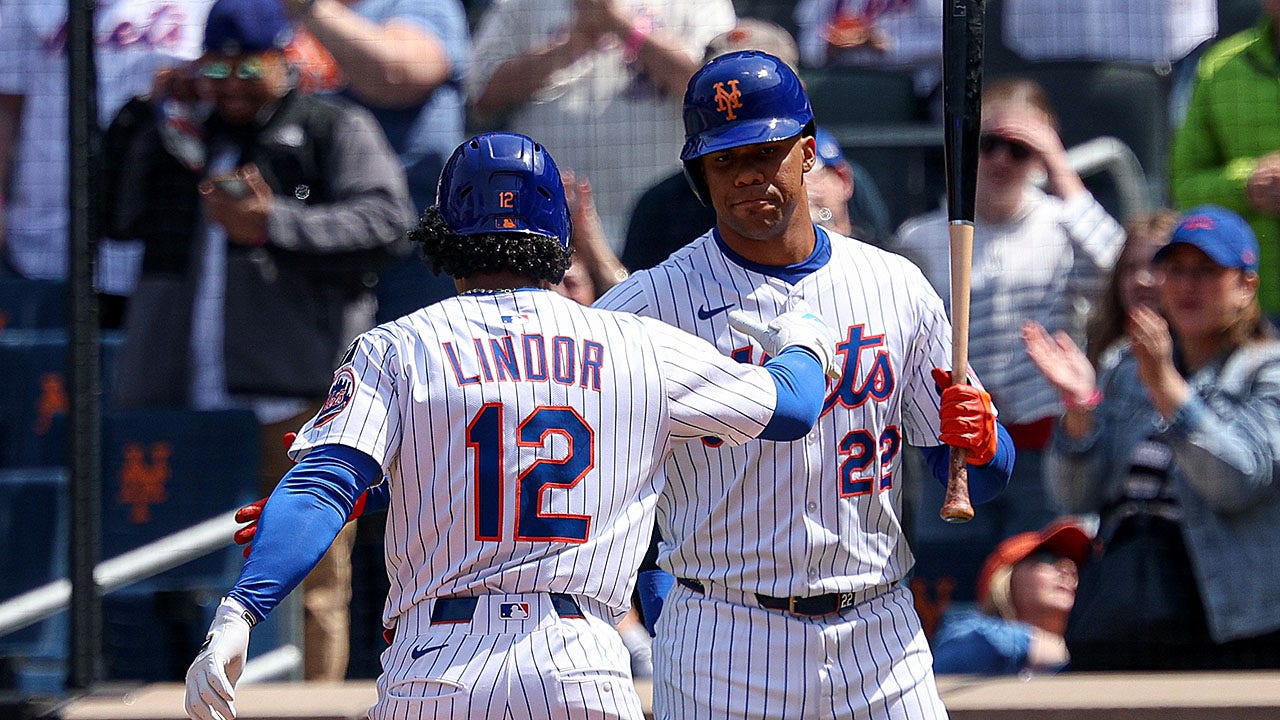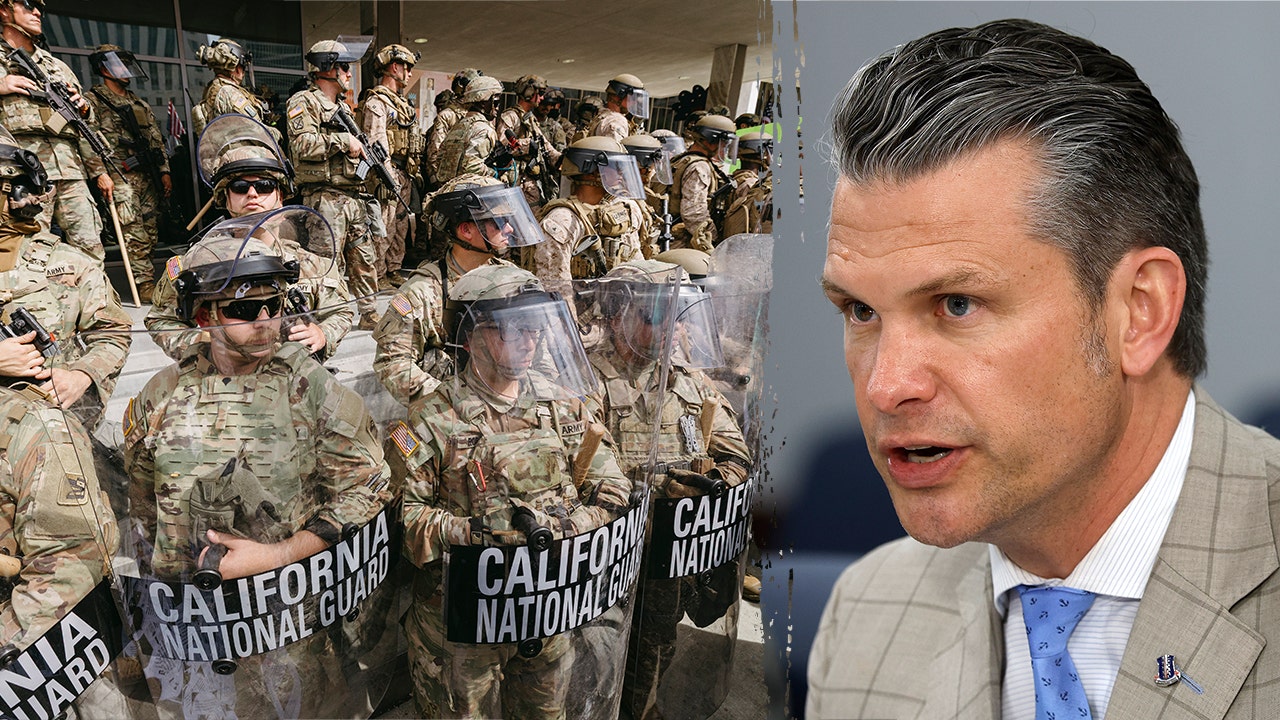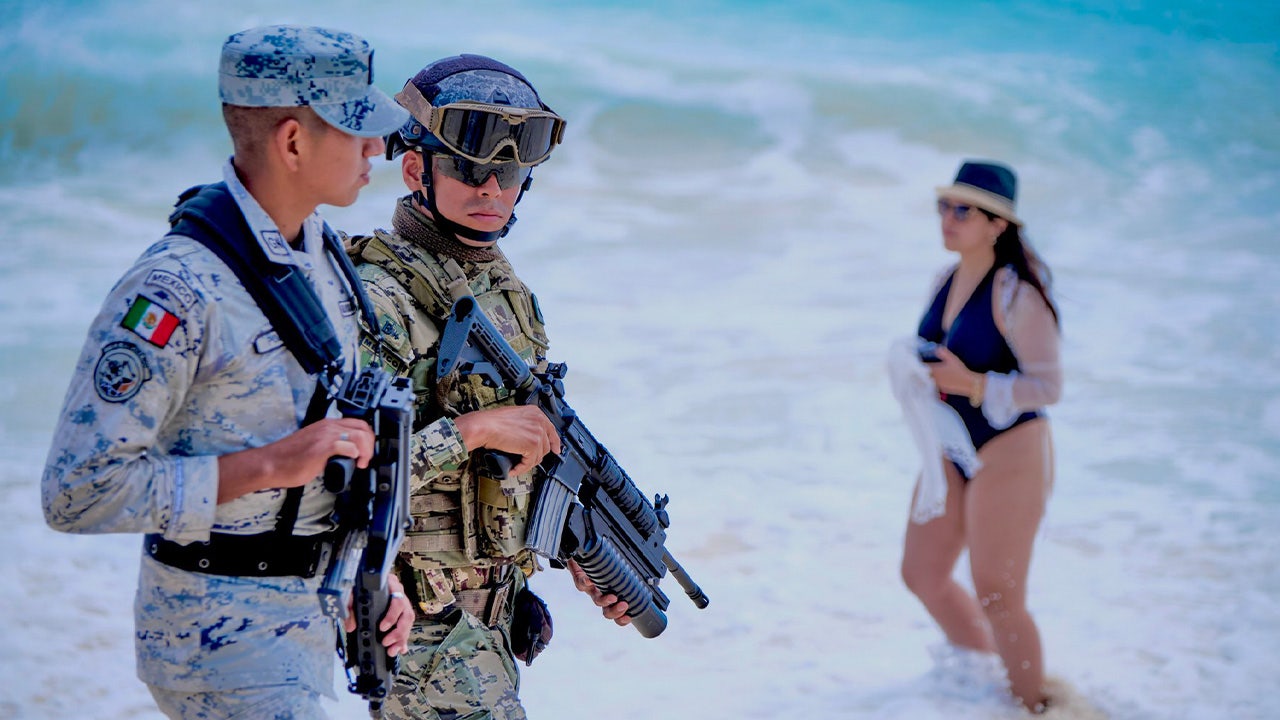From Five Models in Ruins, 1981, at the Claire Tow.
Photo: Marc J. Franklin
Beauty is a cruel mistress, and it makes those who trade on it cruel, too. So we learn from the bickering models assembled at a crumbling British estate waiting around for the start of their Vogue photoshoot. With the fifth of Caitlin Saylor Stephens’s title characters mysteriously absent and their photographer, Roberta (Elizabeth Marvel), busy setting up the lights, the models turn to a gleeful game of “the worst job I ever had …” The gigs they’ve endured, and the harassment from the men (almost entirely) who have shot them, goes past what’s legal — one has been made to pose with corpses, pretty much all have been objectified since they were underage — into arias of brutality. Alex (Britne Oldford) once crash-landed in the Amazon and claims to have survived in a tree by consuming condensation and the flesh of her fellow passengers, “which was actually kind of liberating,” she announces, “’cause I was so hungry, I was starved for that shoot.” The shoot itself was later canceled, she says with a shrug, because of a local coup d’etat.
These models, as Stephens imagines, have absorbed all the scrutiny directed at their bodies and hardened, like metamorphic rock, into sharp and cutting things themselves. Morgan Green, directing, has accelerated her cast’s dialogue and has them self-consciously preening and posing as they compete with one another — they’re shardlike and predatory. These women know one another’s work, mostly because they see one another as competition, and have little camaraderie. Stephens has given them and herself a great hook of a premise for a shoot: The models are here to pose in Princess Diana’s rejected wedding gowns, and so they immediately bicker over who will wear which designer. It’s a good route to understanding their characters, each fitting a certain early 1980s haute archetype. Stephens’s writing leans hard on the proper nouns, as well as the fashion in-jokes. Alex, the intellectual of the group (she reads Kant while everyone else reads the tabloids), calls dibs on Comme des Garçons. Chrissy (Stella Everett), an all-American supermodel with an endless list of exes, snags an Ungaro (“I’m his muse!”). Tatiana (Maia Novi), a scowling Russian, would prefer Jean Paul Gaultier but settles for Givenchy (“I am used to tragedy,” she mutters). Meanwhile Grace (Sarah Marie Rodriguez), the starry-eyed newcomer, is so besotted with every possible look she’s happy to take whatever the others cast off. She ends up in Yves Saint Laurent. That the clothes are so important to character asks a lot of a play’s designers, and it’s commendable that Lincoln Center Theater paid for quality fabric for Vasilija Zivanic’s costumes, which are striking yet playful recreations of bygone trends. There’s a lot of comedy in the unwieldy quadrilateral chest panel of Alex’s dress. Afsoon Pajoufar’s enviably ornate set lends the play verisimilitude too, with great slabs of frescoed walls crumbling into a swampy collection of reeds to one side of the stage.
Stephens, as a playwright, has an eye — or in this case an ear — for that kind of surface texture too. She’s written about the underbelly of fashion before, in Modern Swimwear and When We Went Electronic, and here, her attention to the details, from the lingo to petty rivalries, evinces both horror and admiration. The fifth figure, once she appears, is a British party girl played by Madeline Wise, who delivers a hilarious monologue about all the wrong turns she took on the way to this estate after a very long night out. But Five Models in Ruins’s most fascinating if not quite fully rendered character is the woman behind the camera. Roberta seems inspired by Deborah Turbeville, whom Stephens quotes at the beginning of her script, and who did a shoot with models in those rejected wedding dresses. One of the few women working in that era, she was known for austere and unsettling portraits in sepulchral spaces. Alex says she’d previously worked with Roberta at a shoot in a sauna, a reference to Turbeville’s once notorious photo of models in a bath house. “People started talking about Auschwitz and lesbians and drugs,” she once said, addressing the controversy the picture inspired. “And all I was doing was trying to design five figures in space.”
Stephens’s writing aspires to similar qualities as Turbeville’s work — a high-gloss sheen, undercut by grimy turmoil — but in her portrait of Roberta, she doesn’t quite achieve it. The character arrives like a thunderbolt. Elizabeth Marvel, the go-to actress for anyone with an unsentimental bob, lays into the role like it’s red meat, giving a performance that’s as brusque as it’s quietly wounded. Before the play begins, she’s onstage moving equipment. When asked by the models what she wants from them, she announces, “Women. I shoot women. Can you do that? Be women?” But as Stephens explores what that means, she’s reduced to ordinariness: She’s fighting a creative block, she reveals to the newbie model Grace, and has trouble trusting her eyes. She’s also smarting from a break-up, a detail that becomes disappointingly central to the plot. For these women, being a woman is certainly bound up in being ignored and abused by men, and Stephens captures those indignities well. She doesn’t cut past that into a deeper understanding of Roberta’s artistic impulses. Is the austerity of her work simply regurgitated cruelty? Is there nothing more? Stephens’s piece builds to a literal primal scream, an extended howl that Green has the performers hold so long it goes from pain to comedy to something more. Then it ends on a punch line. It’s structurally neat, like a well-stitched gown, though neatness may be the enemy here. The play already has the sheen of beauty; we could spend more time in the ruins.
Five Models in Ruins, 1981 is at the Claire Tow Theater.












